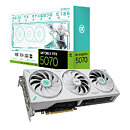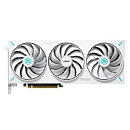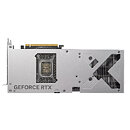
NVIDIA GeForce RTX 5070 SUPER Possible Specs Emerge: 24 Gbit Memory Takes Centerstage
NVIDIA will tap into 24 Gbit (3 GB) GDDR7 memory chips and increase memory sizes across the board for its RTX 50-series SUPER line of GPUs slated for later this year, if leaked specs of the upcoming GeForce RTX 5070 SUPER are anything to go by. Kopite7kimi, a reliable source with NVIDIA leaks, says that the RTX 5070 SUPER will feature 18 GB of memory—that's six 24 Gbit memory chips across a 192-bit wide GDDR7 memory bus. The card has a SKU designation of "PG147-SKU65" and ASIC code of "GB205-400-A1."
Besides 18 GB of memory, the RTX 5070 SUPER reportedly maxes out the "GB205" silicon it's based on, enabling all 50 SM present. The current RTX 5070 has 48 out of 50 SM enabled for 6,144 CUDA cores, whereas the RTX 5070 SUPER, with its 50 SM, should have 6,400 CUDA cores. The marginal increase in shader count will be bolstered by the 50% increase in memory size, and possible increases in GPU boost speeds. The memory bandwidth, however, remains unchanged. It ticks at the same 28 Gbps as on the RTX 5070, which yields 672 GB/s. The TGP will be increased to 275 W, from 250 W.
Besides 18 GB of memory, the RTX 5070 SUPER reportedly maxes out the "GB205" silicon it's based on, enabling all 50 SM present. The current RTX 5070 has 48 out of 50 SM enabled for 6,144 CUDA cores, whereas the RTX 5070 SUPER, with its 50 SM, should have 6,400 CUDA cores. The marginal increase in shader count will be bolstered by the 50% increase in memory size, and possible increases in GPU boost speeds. The memory bandwidth, however, remains unchanged. It ticks at the same 28 Gbps as on the RTX 5070, which yields 672 GB/s. The TGP will be increased to 275 W, from 250 W.











































































